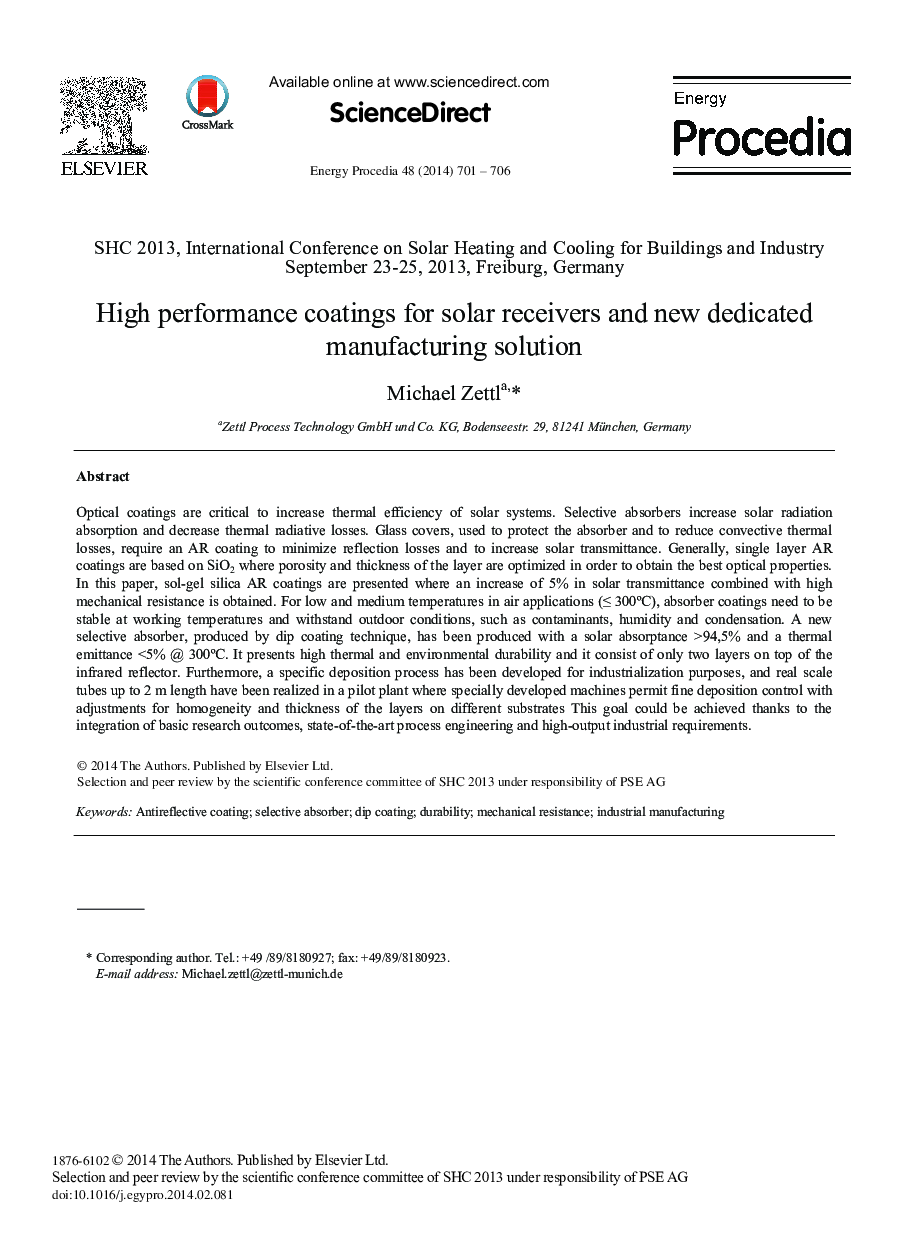| Article ID | Journal | Published Year | Pages | File Type |
|---|---|---|---|---|
| 1511887 | Energy Procedia | 2014 | 6 Pages |
Optical coatings are critical to increase thermal efficiency of solar systems. Selective absorbers increase solar radiation absorption and decrease thermal radiative losses. Glass covers, used to protect the absorber and to reduce convective thermal losses, require an AR coating to minimize reflection losses and to increase solar transmittance. Generally, single layer AR coatings are based on SiO2 where porosity and thickness of the layer are optimized in order to obtain the best optical properties. In this paper, sol-gel silica AR coatings are presented where an increase of 5% in solar transmittance combined with high mechanical resistance is obtained. For low and medium temperatures in air applications (≤ 300 °C), absorber coatings need to be stable at working temperatures and withstand outdoor conditions, such as contaminants, humidity and condensation. A new selective absorber, produced by dip coating technique, has been produced with a solar absorptance >94,5% and a thermal emittance <5% @ 300 °C. It presents high thermal and environmental durability and it consist of only two layers on top of the infrared reflector. Furthermore, a specific deposition process has been developed for industrialization purposes, and real scale tubes up to 2 m length have been realized in a pilot plant where specially developed machines permit fine deposition control with adjustments for homogeneity and thickness of the layers on different substrates This goal could be achieved thanks to the integration of basic research outcomes, state-of-the-art process engineering and high-output industrial requirements.
